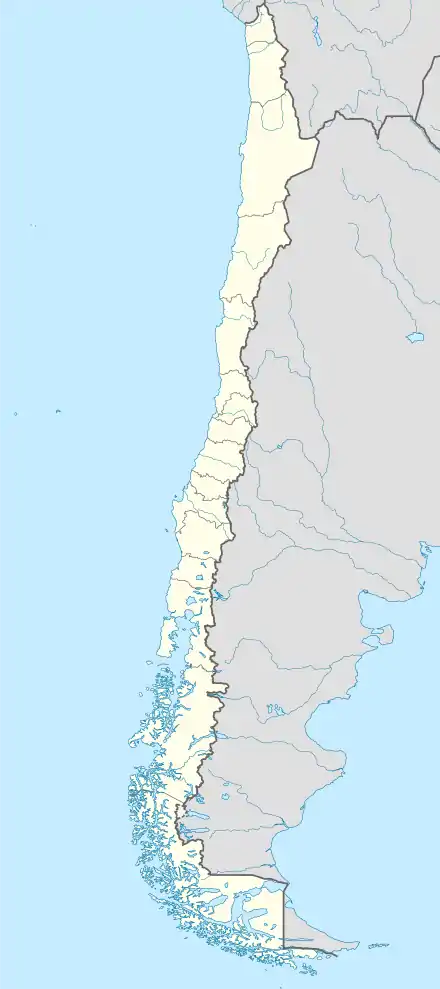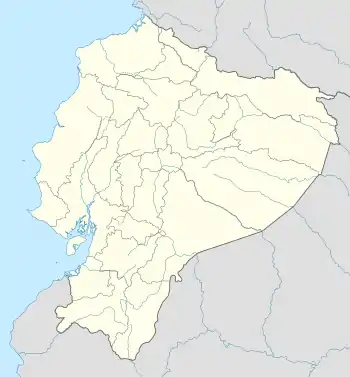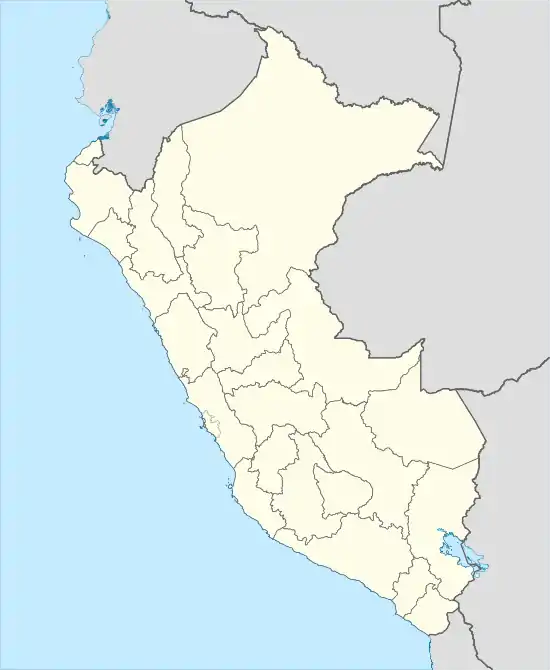List of top-division football clubs in CONMEBOL countries
The South American Football Confederation (CONMEBOL) is the administrative and controlling body for association football in most of South America. It consists of 10 member associations, each of which is responsible for governing football in their respective countries.[1] It includes all countries and territories within South America, with the exceptions of Guyana, French Guiana, Suriname, which are part of CONCACAF, and the disputed British and Argentine territory of the Falkland Islands, which is not a member of any confederation.[1] Each CONMEBOL member has its own football league system.[2] Clubs playing in each top-level league compete for the title as the country's club champion. Clubs also compete in the league and national cup competitions (if applicable) for places in the following season's CONMEBOL club competitions, the Copa Libertadores and Copa Sudamericana. Due to promotion and relegation, the clubs playing in the top-level league are different every season.
| Club name | Club finished the previous season as the league champion. |
| Club name | Club won the most recent Apertura championship. |
| Club name | Club won the most recent Clausura championship. |
| Club name | Club won the most recent Apertura and Clausura championships. |

For clubs playing at lower divisions, see the separate articles linked to in the relevant sections.
Argentina
- Country: Argentina
- Football association: Argentine Football Association
- Top-level league: Primera División
The Primera División is the top level of Argentine football league, and is organized by the Argentine Football Association. Founded in 1893, it currently consists of 30 teams, but is planned to reduce in size to 24 teams by the 2019–20 season. The professional era started in 1931 when professionalism was instituted. Teams from Argentina have won the most international titles with a tally of 73, which includes 25 Copa Libertadores.[3] Currently, the league is regarded as one of the strongest leagues in the world.[4]
As of the 2021 season:[5]


Bolivia
- Country: Bolivia
- Football association: Bolivian Football Federation
- Top-level league: Bolivian Primera División
Bolivia's first division started in 1977 as the Liga de Fútbol Profesional Boliviano (English: Bolivian Professional Football League), though football had been played in Bolivia since the early 1900s, specially in La Paz and Oruro.[6]
As of the 2021 season:[7]

Brazil

- Country: Brazil
- Football association: Brazilian Football Confederation
- Top-level league: Campeonato Brasileiro Série A
Campeonato Brasileiro was created in 1959 as a knockout tournament between state champions. From 1967 to 1987 the best clubs of each state championships were separated in several groups with final play-offs or a final group stage. Every year some aspects of format, number of entrants and rules were changed.[8] Promotion and relegation rules were adopted in 1988, and since 2003 a double round robin format is played every year from May to December.
As of the 2020 season:

Botafogo
Flamengo
Fluminense
Vasco da Gama
São Paulo teams:
Corinthians
Palmeiras
São Paulo
Chile

Audax Italiano
Colo-Colo
Palestino
Unión Española
U. Católica
U. de Chile
Greater Valparaíso teams:
Everton
S. Wanderers
- Country: Chile
- Football association: Chilean Football Federation
- Top-level league: Primera División
The Primera División del Fútbol Profesional Chileno was founded on January 24, 1926, and is currently ranked 14th in the IFFHS Best Leagues of the World ranking.[9] In 2016, the league is also known as Campeonato Scotiabank.
As of the 2020 season:[10]
Colombia

- Country: Colombia
- Football association: Colombian Football Federation
- Top-level league: Primera A
The Categoría Primera A has been in existence since 1948. As of 2015, brewery company Bavaria sponsors the league, which is currently called Liga Águila after one of the company's brands. The league is rated 21st in the world according to IFFHS.[11]
- As of 2021 season:

Atlético Nacional
Envigado
Independiente Medellín
Tunja teams:
Boyacá Chicó
Patriotas
Bogotá teams:
La Equidad
Millonarios
Santa Fe
Cali teams:
América de Cali
Deportivo Cali
Ecuador


Aucas
LDU Quito
Universidad Católica
Ambato teams:
Macará
Mushuc Runa
Técnico Universitario
Guayaquil teams:
9 de Octubre
Barcelona
Emelec
Guayaquil City
- Country: Ecuador
- Football association: Ecuadorian Football Federation
- Top-level league: Serie A
The Serie A has its roots in the national championship between the top teams of Ecuador's two regional leagues. Since the first tournament in 1957, a national champion has been crowned 51 times on a yearly basis (except 1958 & 1959), and twice in 2005.[12] Starting from the 2010 season a new format consisting of three stages was used.[13][14] This format lasted until 2018, when it was decided that the league would expand from 12 to 16 teams.[15]
As of the 2021 season:[16]
Paraguay
- Country: Paraguay
- Football association: Paraguayan Football Association
- Top-level league: Primera División
Liga Paraguaya's first game was played in 1906.[17] It joined CONMEBOL in 1921, and FIFA in 1925. The professional era of the competition in the Liga started in 1941. During the 1990s, the FA changed its denomination from Liga Paraguaya del Futbol to Asociacion Paraguaya de Futbol. Currently, the league is regarded as one of the top 10 national competitions in the world.[18][19]
As of the 2021 season:[20]

Peru
- Country: Peru
- Football association: Peruvian Football Federation
- Top-level league: Liga 1
The Liga Peruana de Football (Peruvian Football League) was first founded in 1912 and organized the Primera División, as well as the Segunda División, until 1921. Due to disagreements in the organization of the Liga Peruana de Football, the Peruvian Football Federation was founded in 1922 and organized its first league in 1926. In 1941 the Asociación No Amateur took the stand as the league's organizer and renamed the league Campeonato de Selección y Competencia.[21][22]
As of the 2021 season:[23]
Uruguay

- Country: Uruguay
- Football association: Uruguayan Football Association
- Top-level league: Primera División
Liga Profesional de Primera División, the top-flight professional football league in Uruguay, was founded in 1900 and is currently contested by 16 teams. In 2016, the league underwent a transition from the European calendar to a year calendar, which is used from the 2017 season onwards.
As of the 2020 season:[24]
Venezuela
.svg.png.webp)
Academia Puerto Cabello
Aragua
Carabobo
GV Maracay
Barinas teams:
H. Colmenarez
Zamora
Caracas teams:
Atlético Venezuela
Caracas
Deportivo La Guaira
Metropolitanos
Universidad Central
- Country: Venezuela
- Football association: Venezuelan Football Federation
- Top-level league: Primera División
The Primera División was created in 1921 and turned professional in 1957. The 2016 season consisted of 20 clubs, a number that was reduced to 18 for the following season. Currently, the league is rated 41st in the world by IFFHS.[25]
As of the 2021 season:
References
- "Congreso para modernizar el estatuto de la Conmebol" (in Spanish). Asociación del Fútbol Argentino. 7 July 2009. Retrieved 13 August 2010.
- "Liechtenstein making strides" (in Spanish). Confederación Sudamericana de Fútbol. Retrieved 13 August 2010.
- "Lista de títulos internacionales oficiales a nivel clubes de la AFA" (in Spanish). Asociación del Fútbol Argentino.
- IFFHS (5 January 2010). "La Mejor Liga de Fútbol del Mundo 2009" (in Spanish). Retrieved 5 January 2010.
- "Estadisticas de Primera División" (in Spanish). Argentine Football Association. Archived from the original on 25 July 2015. Retrieved 17 October 2016.
- "Lista de Campeones bolivianos" (in Spanish). RSSSF.
- "IV – 2010 Campeonato Clausura Entel" (in Spanish). Liga de Fútbol Profesional Boliviano. Archived from the original on 2011-07-06.
- Revista Placar Guia do Brasileirão 2008 e 2009
- IFFHS
- "Campeonato Nacional Scotiabank 2016" (in Spanish). Chilean Primera División. Archived from the original on 2010-08-14.
- IFFHS (24 September 2013). "La Mejor Liga de Fútbol del Mundo 2012".
- Futbolizados Ecuador (18 March 2010). "Campeonato Ecuatoriano se llamará Copa CREDIFE hasta 2014". futbolizados.com. Archived from the original on 2011-07-11. Retrieved 2010-08-14.
- Federación Ecuatoriana de Fútbol (16 December 2009). "Directivos establecieron sistema de campeonato para 2010". Retrieved 20 December 2009.
- El Universo (17 December 2009). "Congreso de fútbol resolverá si aprueba sistema del 2010". Retrieved 20 December 2009.
- El Universo (21 August 2018). "[OFICIAL] Liga Profesional 2019: con 16 equipos, incluidos los que deberían descender". Retrieved 23 December 2018.
- "Clubes de Primera Categoría "A"" [Primera Categoría "A" Clubs] (in Spanish). Archived from the original on October 8, 2010. Retrieved June 3, 2010.
- "Paraguay - League History 1906-1964" (in Spanish). RSSSF.
- "La Ligas más Fuertes del Mundo en 2009: Primeras tendencias". IFFHS. July 2009. Retrieved 24 July 2009.
- Nicolás Ledesma (21 July 2009). "El campeonato paraguayo está entre los diez mejores del Mundo". APF. Archived from the original on 2009-09-15. Retrieved 24 July 2009.
- "Intermedia 2010" (in Spanish). Paraguayan Primera División.
- "Campeones del Futbol Peruano Primera Division". FPF. Archived from the original on 17 June 2011. Retrieved 27 August 2009.
- "La Asociación". ADFP. Archived from the original on 26 July 2011. Retrieved 27 August 2009.
Los campeonatos organizados por la Federación Peruana de Fútbol, en plena era amateur, tuvieron vigencia hasta 1940, en que se crea la ANA (Asociación No Amateur) y cuya existencia alcanzó 10 años.
- "Torneos – Clubes Profesionales (Primera División)" [Tournaments – Professional Clubs (Primera División)] (in Spanish). Archived from the original on 2011-06-17. Retrieved June 3, 2010.
- "Clubes – Primera División" [Clubs – Primera División] (in Spanish). Archived from the original on August 30, 2010. Retrieved June 3, 2010.
- IFFHS (5 January 2010). "La Mejor Liga de Fútbol del Mundo 2009". Retrieved 5 January 2010.





.jpg.webp)
